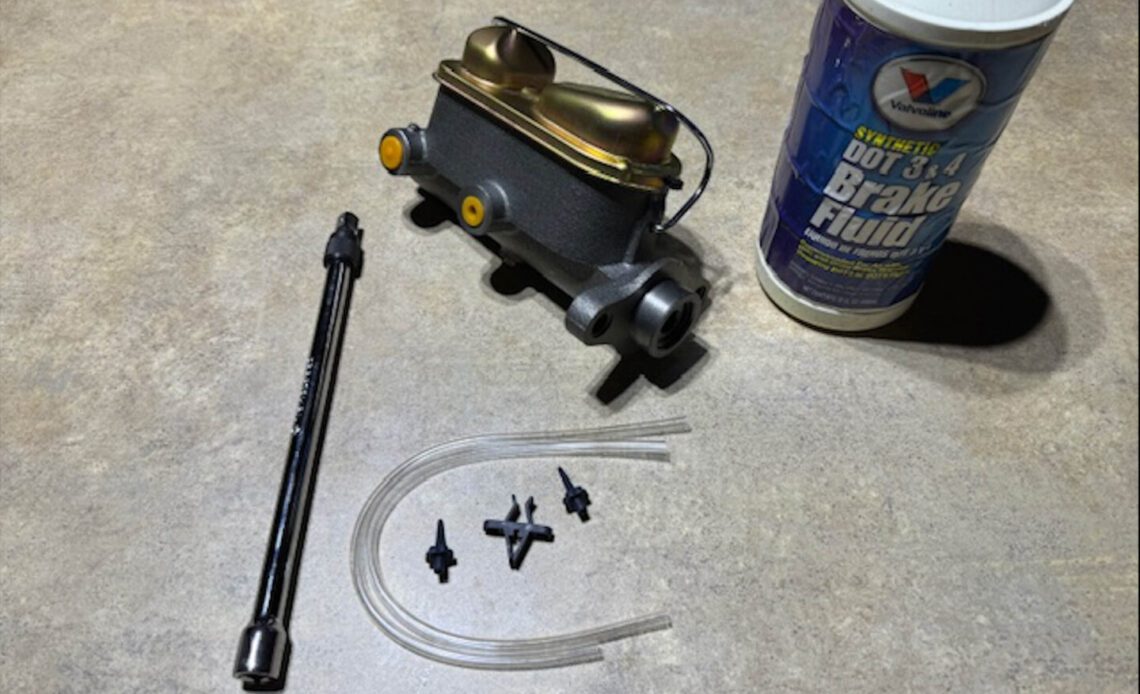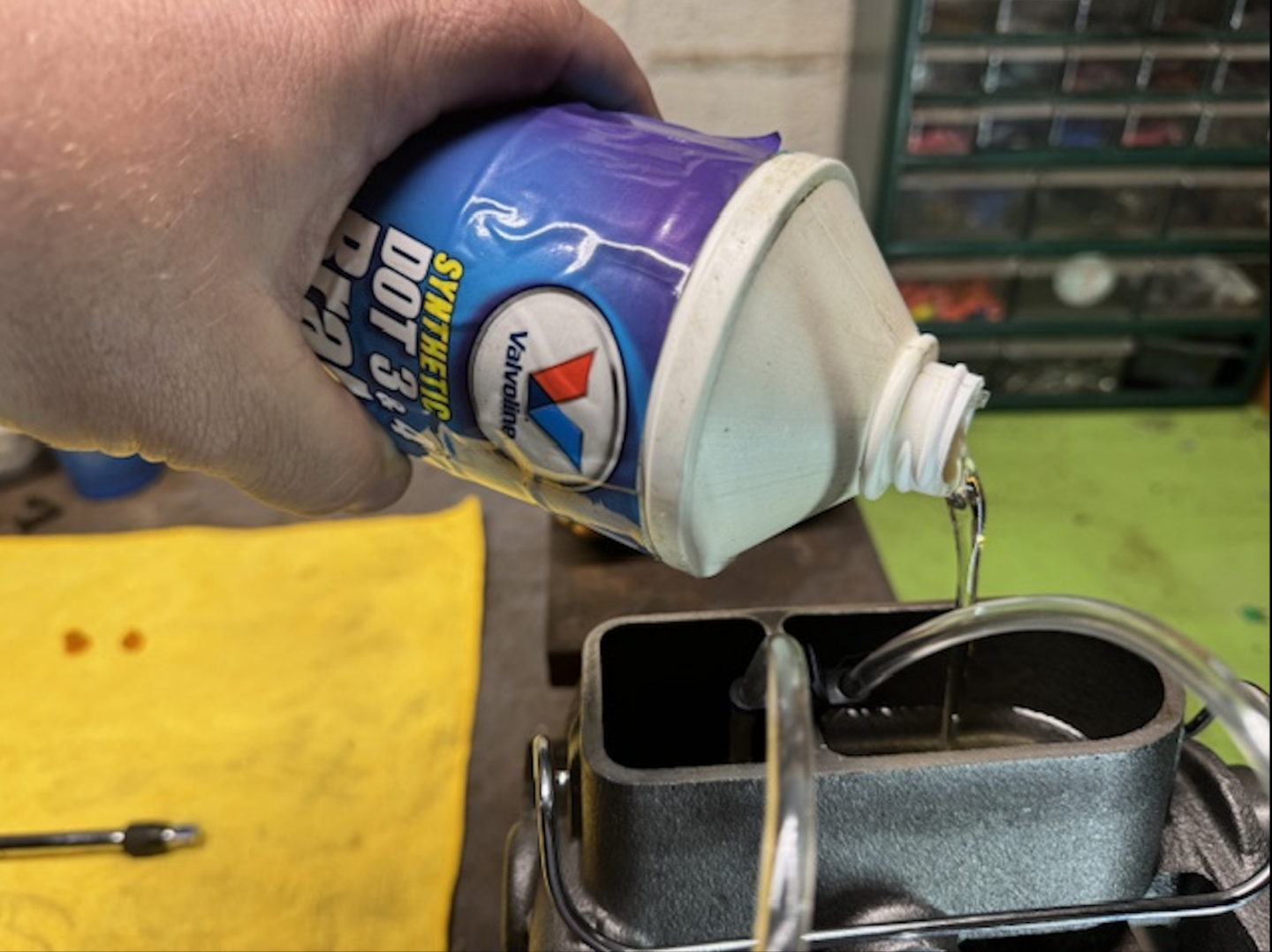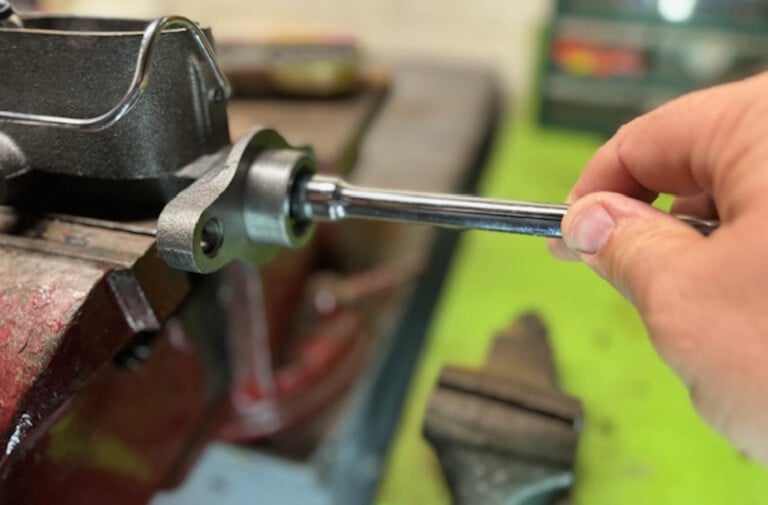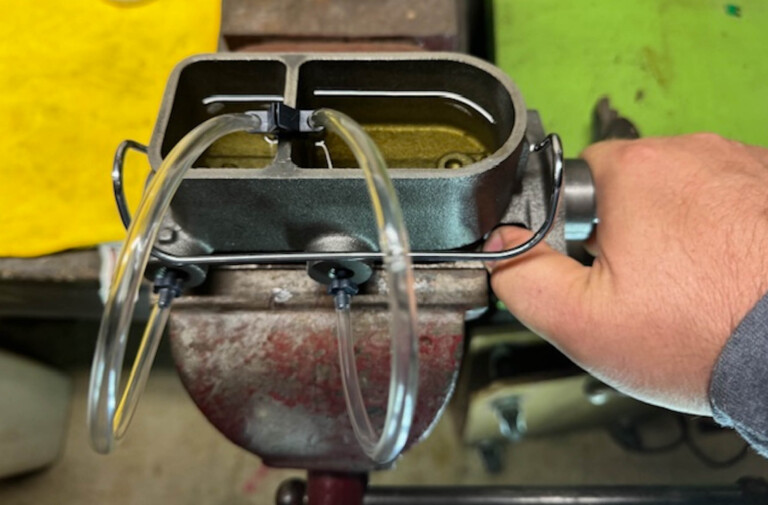If you’ve spent enough time around cars, you’ve probably heard the phrase “bleeding the brakes.” For over a century, cars have relied on hydraulic braking systems, where the pedal actuates a master cylinder to force brake fluid to the calipers or wheel cylinders. Air in the brake lines can lead to a spongy pedal and poor brake performance, so it’s essential to manually remove it from the system, a process known as bleeding the brakes. This is typically required after any work involving the disc or drum, such as caliper or brake hose replacement. However, when replacing the entire system or just the master cylinder, it’s crucial to bleed the master cylinder before installation. This pre-installation bleeding, known as bench bleeding, is much easier than bleeding the master cylinder once it’s installed. Let’s walk through the process.
The Braking Zone
Start by acquiring a bench bleeding kit. You can easily pick one up from your preferred parts store, often available alongside master cylinder purchases. These kits typically include plastic fittings you thread into the master cylinder to simulate hard brake lines, small hoses for circulating brake fluid, and clips to secure the hoses to the master cylinder.
Secure the master cylinder by mounting it in a vice or another stable fixture, ensuring it remains level during the bleeding process. Attach the fittings and run the hoses from the fittings back to the master cylinder bowls that hold the brake fluid. Use the provided clips to secure the hoses to the master cylinder. Next fill the master cylinder with clean brake fluid, preferably the same type you plan to use in your braking system, such as DOT3.
Use a small extension or a screwdriver to push on the master cylinder piston, simulating pedal pressure. Be careful not to damage the piston. As you engage the piston, you’ll observe air bubbles coming through the clear hoses. Continue this process until you no longer see any bubbles. This indicates that only fluid remains in the system. You can now prepare the master cylinder for installation on your vehicle. Remove one of the hoses entirely, then take the remaining hose and disconnect it from the bowl. Connect this hose to the open fitting, creating a loop. This setup will prevent leaks and can remain in place until you connect the master cylinder to the brake system.
More GO Needs More WHOA
By following these steps, you can effectively bench bleed the master cylinder, ensuring proper…
Click Here to Read the Full Original Article at DragzineDragzine…




